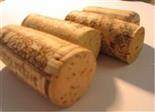
What Is Cork?
Cork is a natural product, and is the bark of the Cork Oak tree. It is formed at the rate of 1.5mm per year and to a thickness of 60mm. When the tree reaches a circumference of 800mm the cork can be harvested.
A cork tree is first harvested when it is 25 years old and, by law the tree is only allowed to be stripped once every 9-12 years.
Cork from the first two harvests is used to make products such as insulation and floor tiles.
Only the third and subsequent harvests (known as reproduction cork) are smooth and regular enough for use as wine corks and a range of other products such as notice boards, gaskets, cricket balls and floor tiles.
Cork trees live for around 150-250 years and so there is a limited number of harvests from each tree.
Stripping the bark does not harm the tree. The tree survives having its bark stripped because, it has a very thick layer of skin. A thin under layer is left when the bark is stripped, so it can continue to transport water and other nutrients up the trunk.
Why Recycle Cork?
Much of the cork is recycled within the production process. The recycling of cork stoppers after use is also well established, particularly in Australia and Portugal.
Although the recycling of cork is a well established practice in countries such as Australia and Portugal, the UK does not yet have a dedicated scheme for recycling cork, although Amorim is currently working on developing a UK nationwide scheme for the collection of spent corks.
A pilot scheme ran during 2000 by Amorim, in conjunction with the UK Guide Association to collect natural wine corks. All corks collected were sent to a central warehouse, near Heathrow, for dispatch to Portugal, where they were recycled for
re-use in the making of cork products such as insulation, tiles and pin boards.
This scheme, although very successful, has since ceased, and an international generic campaign for cork run by APCOR (Portuguese Cork Association) has been launched.
Sustainable Production:
All of the cork bark is used in production - nothing is wasted. As cork waste is generated in the production process, it is granulated and returned into the process. Even the fine particles of cork dust are collected and used as fuel to heat the factory boilers.
The harvesting of the trees themselves is sustainable because no trees are cut down or harmed in the process, and they will re-grow the bark without any addition of fertilisers or soil enhancers.
Fascinating Facts:
In addition to its ecological value, the cork oak is truly remarkable because every part of the tree serves some useful economic purpose.
For example:
- The acorn of the cork tree, as well as being used for propagation, is used as animal fodder and as a source of cooking oils;
- The leaves of the trees are used as fodder and as a natural fertiliser;
- Tree cuttings and decrepit trees provide firewood and charcoal. Various chemical products are made from the tannins and natural acids contained within the wood.